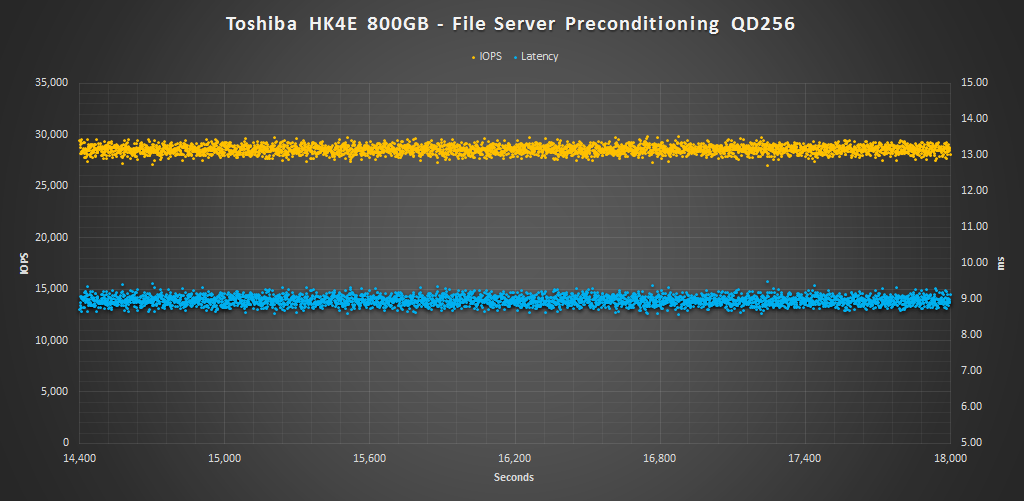SERVER PROFILES CONTINUED
Our last set of profiles include File Server and Web Server workloads. As mentioned before the last hour of preconditioning, the average IOPS, and average latency for each QD is graphed below.
The File Server profile is based on an 80% read/20% write mix. It’s made up of block sizes from 512 to 64K, each making up a different percentage of the access pattern. The pattern is: 512 bytes=10%, 1k=5%, 2k=5%, 4k=60%, 8k=2%, 16k=4%, 32k=4%, 64k=10%.
During the File Server benchmark, we can see very similar performance to that of our Email Server results, only now there is a bit smaller gap in performance between both the Samsung and Toshiba SSDs. Under this mixed workload the Toshiba still takes the lead and Micron’s M510DC is nowhere near the performance of these two comparison drives. Latency reaches just above 1ms and IOPS reach nearly 28K at QD32.
The Web Server profile is similar to the File Server profile, but has some additional 128K and 512K accesses thrown in for good measure. Additionally, the profile is 100% reads.
Though by a close margin, the Samsung SM863’s superior pure read performance gives it a win in the Web Server benchmark. Overall, the HK4E still gave it a run for its money in the higher QDs and passed over 30K IOPS and just over 1ms at QD32.
 The SSD Review The Worlds Dedicated SSD Education and Review Resource |
The SSD Review The Worlds Dedicated SSD Education and Review Resource | 

